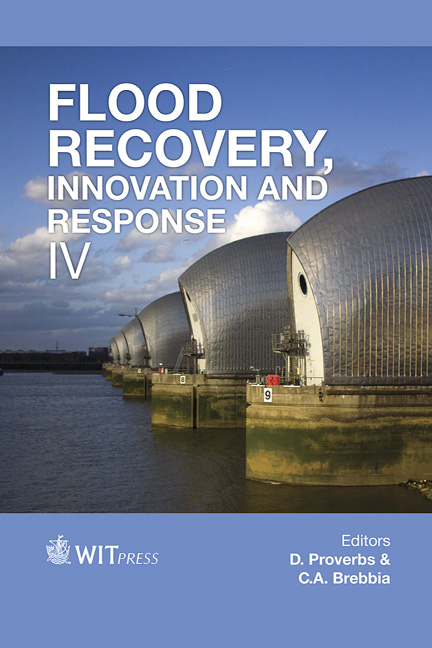Implementing Tools To Meet The Floods Directive Requirements: A \“procedure” To Collect, Store And Manage Damage Data In The Aftermath Of Flood Events
Price
Free (open access)
Transaction
Volume
184
Pages
12
Page Range
215 - 226
Published
2014
Size
453 kb
Paper DOI
10.2495/FRIAR140181
Copyright
WIT Press
Author(s)
D. Molinari, M. Mazuran, C. Arias, G. Minucci, F. Atun & D. Ardagna
Abstract
The aim of this paper is to present a \“procedure” to collect and store damage data in the aftermath of flood events. The activity is performed within the Poli_RISPOSTA project (stRumentI per la protezione civile a Supporto delle POpolazioni nel poST Alluvione), an internal project of Politecnico di Milano whose aim is to supply tools supporting Civil Protection Authorities in dealing with flood emergency. Specifically, the aim of this paper is to discuss the present implementation of the project, highlighting challenges for data collection, storage, analysis and visualisation. Data can have different formats (e.g. paper based vs. digital form, different digital files extensions), refer to different aspects of the phenomenon (i.e. hazard, exposure, vulnerability and damage), refer to different spatial and temporal scales (e.g. micro vs. meso scale, different phases of the flood event) and come from different sources (e.g. local authorities, field surveys, crowdsourcing). Therefore a multidisciplinary approach which includes expertise from ICT, geomatics, engineering, urban planning, economy, etc. is required. This paper first describes a conceptual map of the issue at stake, then it discusses the state of the art of the implementation, taken as reference the Umbria flood in November 2012. Impacts of the project are discussed with particular attention to their utility to meet some of the \“Floods Directive” (Directive 2007/60/EU) requirements: (i) to create a reliable and consistent database; the latter should be the basis on which damage models can be defined/validated and thus risk can be mapped; (ii) to supply a comprehensive scenario of flood impacts according to which priorities can be identified during the emergency and recovery phase.
Keywords
flood risk management, flood damages, disaster databases, flood damage maps.





